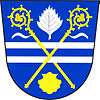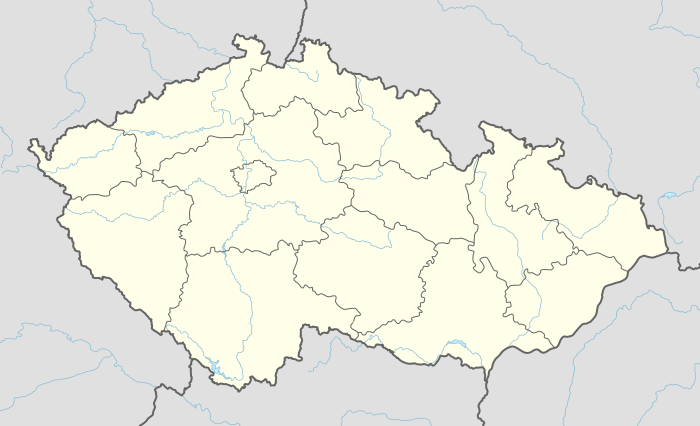Panenské Břežany
Panenské Břežany (German: Jungfern-Breschan) is a village and municipality in Prague-East District in the Central Bohemian Region of the Czech Republic.
Panenské Břežany | |
|---|---|
Municipality | |
Upper Chateau in Panenské Břežany | |
 Flag  Coat of arms | |
 Location in Prague-East District | |
 Panenské Břežany Location in the Czech Republic | |
| Coordinates: 50°12′50″N 14°26′28″E | |
| Country | |
| Region | Central Bohemian |
| District | Prague-East |
| Area | |
| • Total | 5.79 km2 (2.24 sq mi) |
| Elevation | 245 m (804 ft) |
| Population (2010-01-01) | |
| • Total | 567 |
| • Density | 98/km2 (250/sq mi) |
| Postal code | 250 70 |
| Website | http://www.panenskebrezany.cz/ |
The municipality covers an area of 5.79 km² and as of 2010 it had a population of 567.
Panenské Břežany lies in proximity of the capital city of Prague, approximately 14 kilometres (9 mi) north of its centre.
History
The settlement was first mentioned in 1233 as the possession of the Benedictine monastery of St. George at Prague Castle. In the first half of the 18th century a Baroque palace was built, which came to be called the Oberes Schloss.
After the secularization of the monastery during reign of Emperor Joseph II the manor fell to the Virgin Teinitz Religious foundation. Until 1820 the owners changed several times, then it was purchased by Matthias von Riese-Stallburg. It was re-designed and re-built around 1840 as a French chateau. His descendants lost the property in 1901 because of indebtedness to the Prague Credit Bank. In 1909 the property was bought by Ferdinand Bloch-Bauer, a financially strong Jewish buyer involved in the sugar industry. Bloch-Bauer decorated the Lower Chateau with his private art collection and a hunting room full of trophies.
Following the Nazi occupation after 1939, the Jewish industrialist fled and the estate was confiscated. From 1939 to 1942 the Lower Chateau was the residence of the Reichsprotektor of Bohemia and Moravia. In the chateau complex lived both Konstantin von Neurath and from 1941 his deputy (Stellvertretender Reichsprotektor), the SS-Obergruppenführer Reinhard Heydrich, with their families. In May 1942, while driving from the mansion to his work in Prague, Heydrich was the victim of an assassination attempt, and died a week later at the beginning of June. After Heydrich's death, his widow Lina lived with the children until 1945 at the chateau. Their ten-year-old son Klaus died in a car accident there in October 1943.
The Upper Chateau was occupied by Karl Hermann Frank during World War II.
"In April 1943 Hitler finally decided that the future of the [Heydrich] family must be safeguarded, and by a special Fuehrer-decret he ordered that Heydrich's "beloved schloss Jungfern-Breschan" with all its contents and lands should be handed over to his widow and family in perpetuity. The Fuehrer added that it was his desire that the heirs should always be associated with the property."[1]
The Czech government refused to return the property to Block-Bauer's heirs, citing Czech restitution laws.
Literature
- Charles Wighton, Heydrich: Hitler's Most Evil Henchman (London, 1962),
References
- Charles Wighton, Heydrich: Hitler's Most Evil Henchman (1962), p. 282.
- This article was initially translated from the Czech Wikipedia.
| Wikimedia Commons has media related to Panenské Břežany. |